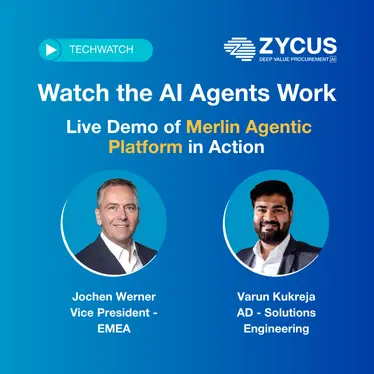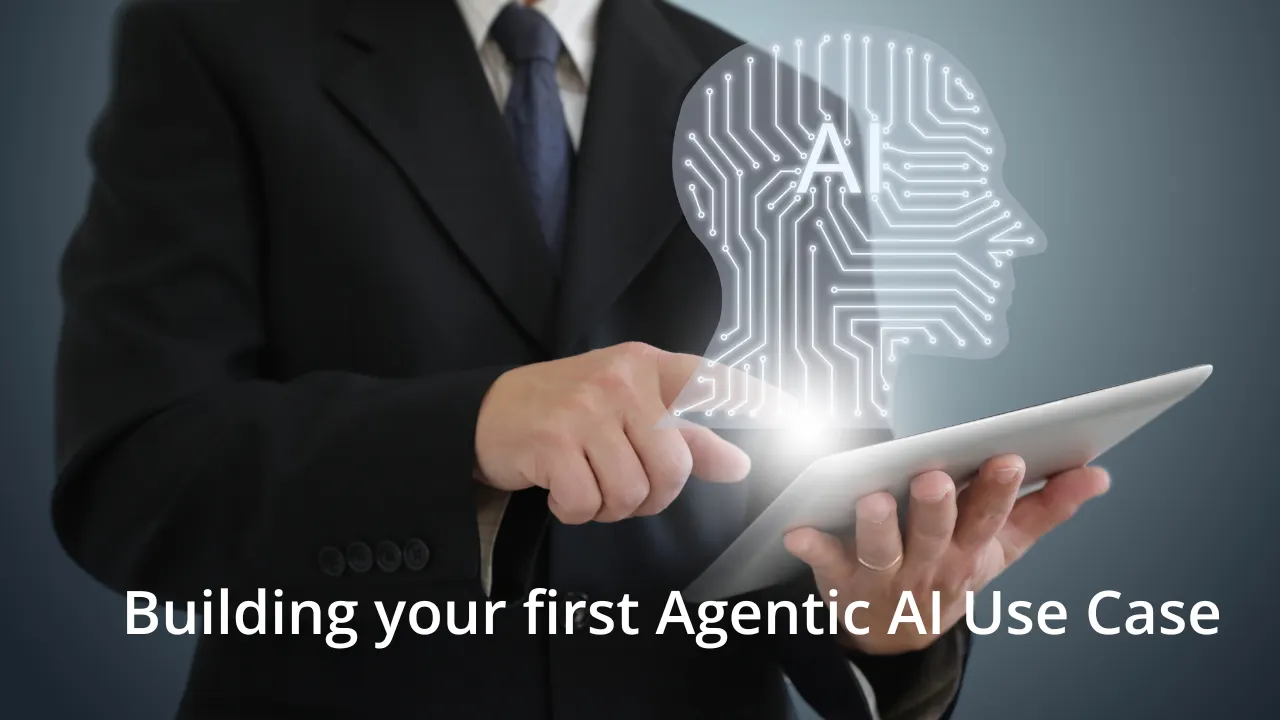Introduction: Why Intake Management Adoption Still Falls Short – TEST
Procurement is evolving from a reactive function to a proactive, AI-driven business enabler. At the center of this transformation is intake management the gateway where procurement engagement begins Yet, despite its strategic potential, user adoption in intake management remains a persistent roadblock, limiting the full impact of even the most advanced tools.
Technology alone doesn’t drive change. Behavior does.
According to McKinsey, organizations adopting private-sector procurement practices achieve 10–15% annual savings across key categories. But the reality is, those savings rely heavily on consistent intake usage not partial adoption or workarounds. When employees still default to email or spreadsheets, intake-to-procure workflows break before they start.
The impact goes beyond inconvenience:
- Manual intake creates approval delays, inconsistent data, and missed policy checks.
- It increases administrative overhead, reversals, and sourcing bottlenecks.
- And it reduces the visibility needed for AI-driven forecasting, which McKinsey shows can reduce procurement errors by 20–50% and lower admin costs by up to 40%.
The issue isn’t lack of tools. It’s the lack of user engagement.
This blog lays out practical, data-backed strategies to improve user adoption of intake management tools so procurement can realize the full value of its automation investments.
Because without adoption, intake is just another system. With it, it becomes the starting point for enterprise-wide orchestration.
TL;DR
- Adoption, Not Tools, Drives Results: The biggest barrier to effective intake management isn’t lack of technology—it’s low user engagement and inconsistent usage.
- Manual Workarounds Hurt Performance: When users default to email or spreadsheets, it disrupts workflows, delays approvals, and diminishes the value of AI in procurement.
- Behavioral Design Is Critical: Embedding intake tools into everyday platforms like Microsoft Teams and simplifying UX through guided forms can significantly boost adoption.
- Champions & Feedback Accelerate Buy-in: Engaging internal champions and creating real-time feedback loops can increase adoption by 20% or more.
- Adoption Is the True ROI: Without broad usage, even the most advanced intake platform fails to deliver strategic procurement value.
Why User Adoption Is Critical for Intake-to-Procure Success
Intake management tools are only as powerful as the people who use them. While procurement platforms may offer intelligent routing, policy enforcement, and guided workflows, if users bypass the system, the entire intake-to-procure flow collapses. This isn’t just a technical issue it’s a strategic one.
When users default to outdated methods like email or spreadsheets, procurement is left with fragmented inputs, inconsistent data, and broken approval chains. These behaviors don’t just slow down requests they increase the risk of maverick spend, reduce compliance enforcement, and make it impossible to forecast or scale with confidence.
The downstream impact is measurable. According to McKinsey, organizations that embed advanced analytics in procurement can achieve 3–8% cost savings over traditional pricing models but only if the underlying data is clean and consistently captured. Intake is the entry point to that data. When adoption is low, AI insights become unreliable, policy checks are missed, and efficiency gains vanish.
Without strong intake adoption, procurement remains reactive. With it, procurement becomes proactive shaping demand, accelerating approvals, and orchestrating value from the very first request.
User adoption isn’t a nice-to-have it’s the activation switch for modern procurement.
Core Intake Management Adoption Strategies That Work
Driving user adoption for intake management requires more than just training sessions or toolkits it demands intentional design, behavioral alignment, and continuous engagement. Procurement teams must approach adoption the same way they approach sourcing strategy: structured, data-driven, and user-centered.
One of the most effective strategies is embedding intake into platforms users already use daily such as Microsoft Teams or internal portals. This eliminates the need for context switching and reduces friction. When users can initiate procurement requests in the flow of their normal work, adoption becomes a byproduct of convenience. Additionally, intake tools should be intuitive by design. Role-based access, guided forms, and conversational interfaces simplify the experience and reduce hesitation. Complex intake workflows, even when well-designed on the backend, will fail if users perceive them as cumbersome.
Equally important is engaging champions across the business. Empowering process owners and frequent requesters to act as early adopters helps seed confidence and generate internal momentum. According to recent findings, organizations that implement champion programs see a 20% increase in user adoption rates, driven by peer influence and informal advocacy. These champions serve as critical bridges between system rollout and cultural shift.
Measuring what matters is essential. Tracking active usage, form completion rates, and processing times in real time allows procurement leaders to course-correct before disengagement sets in. Feedback loops via surveys, analytics, or quick pulse checks should be built into the adoption journey. When users feel heard and see that their input shapes the tool’s evolution, they become more invested.
Ultimately, successful intake management adoption isn’t the result of a single tactic it’s the outcome of layered strategies that meet users where they are, simplify their path, and reinforce value at every step.
Adoption happens when intake tools are less about process enforcement and more about enabling users to get work done easily, quickly, and confidently.
Technology as an Enabler, Not the Strategy
While AI, automation, and advanced platforms can drastically improve procurement operations, technology alone doesn’t guarantee user adoption. Too often, organizations assume that deploying an intelligent intake tool will naturally lead to usage. In reality, adoption is the result of how well the technology fits into the user’s daily context, not just how powerful it is.
AI-powered intake systems offer tremendous advantages: from auto-classification of requests to predictive routing, contextual FAQs, and smart nudges that help users complete forms correctly the first time. These features reduce manual steps and eliminate guesswork, especially for infrequent requesters. In many cases, systems like Zycus’ Merlin Intake Agent enable up to 90% automation in intake triage dramatically reducing the time and effort needed to process and route requests. But even the smartest tool can fail if it’s not intuitive, well-positioned, or supported by user-driven processes.
Download Whitepaper: Intake Management Maturity – From Chaos to Control
The key is to view technology as an enabler of user behavior not a replacement for it. Intake systems must be designed to augment human workflows, not interrupt them. That means aligning design with how users think, operate, and interact across roles from finance and marketing to legal and supply chain. A sleek interface with policy-aware prompts and real-time support can improve confidence and completion rates, but only if paired with training, communication, and trust.
AI also plays a critical role in adoption after rollout. Predictive analytics can highlight which teams are underutilizing the system, which categories see the most off-platform requests, and where friction might exist in the intake journey. This visibility allows procurement leaders to iterate faster refining workflows, simplifying approvals, and continuously improving user experience.
Adoption doesn’t start with AI. It starts with empathy and AI follows. When technology is built to serve people, not the other way around, adoption becomes natural.
Listen to Podcast: Top Use Cases of AI in Intake Management: For Procurement Leaders
How We Help
At Zycus, we believe intake management should feel intuitive, not intrusive. That’s why our approach goes beyond software deployment; we embed AI, design, and adoption strategy into the core of every implementation.
Our Merlin Intake Agent is AI-native and built-in, not bolted on. It’s designed to meet users where they work integrated directly into platforms like Microsoft Teams and built to guide users through the request process with clarity, speed, and policy awareness. Users don’t need to be trained in procurement logic they simply follow an interface that’s structured to think like they do.
The result? 90% automation in intake triage, which accelerates cycle time and reduces the burden on procurement teams. Intelligent routing, auto-classification, and embedded policy prompts ensure that requests are clean from the start minimizing errors, escalations, and rework.
But we don’t stop at rollout. Zycus equips procurement leaders with real-time usage dashboards, so you can monitor adoption across teams, spot friction points, and refine workflows as needed. And through built-in analytics, you can track performance not only in process efficiency, but in user behavior ensuring that technology continues to evolve with your teams.
Conclusion: Adoption Is the Real ROI
The success of any intake management initiative isn’t measured by go-live dates or feature checklists; it’s measured by how many users actually engage with the system. Without adoption, even the most advanced intake platform becomes just another disconnected layer in an already complex procurement stack.
But when adoption is intentionally driven by user-centric design, embedded guidance, peer influence, and real-time feedback Intake transforms into a strategic enabler. It becomes the first step in a fully orchestrated procurement journey, ensuring compliance, accelerating approvals, and empowering better decisions across the enterprise.
Whether you’re implementing intake for the first time or trying to boost adoption of an existing solution, the path forward is clear: simplify the experience, track what matters, build champions, and let AI support not replace the user journey.
Watch on-demand Webinar: Transform intake into a Strategic Procurement Advantage
Adoption isn’t just a goal it’s the gateway to everything procurement promises to deliver.
And with the right strategy, it’s absolutely within reach.
Related Reads:
- Unlocking Success: Intake Management Best Practices And Key Strategies
- The Growing Significance of Intake Management in the Procurement Technology Market
- Intake-to-Pay vs. Procure-to-Pay: Key Differences and Selecting the Right Approach
- Revolutionizing Procurement: The Promising Future of Intake Processes
- Steps to Transform Your Procurement Intake Process
- Revolutionizing Procurement Requests and Intake Management: Empowering Users in the Procurement Ecosystem
- On Demand Webinar: Driving AP Transformation and Cost efficiency with AI-led Automation
- eBook: 7 Key Considerations to More Effective Supplier Risk Management




























































